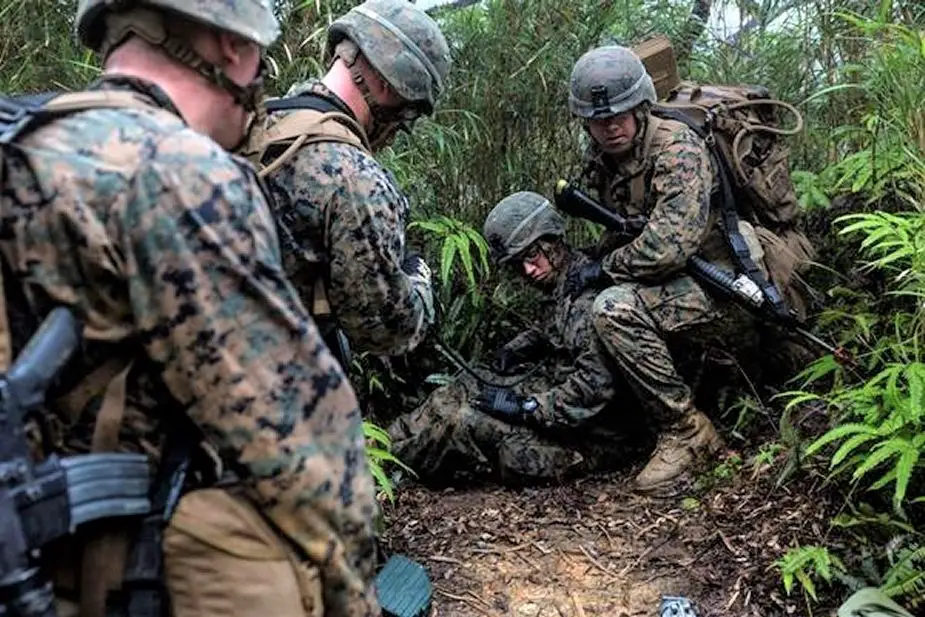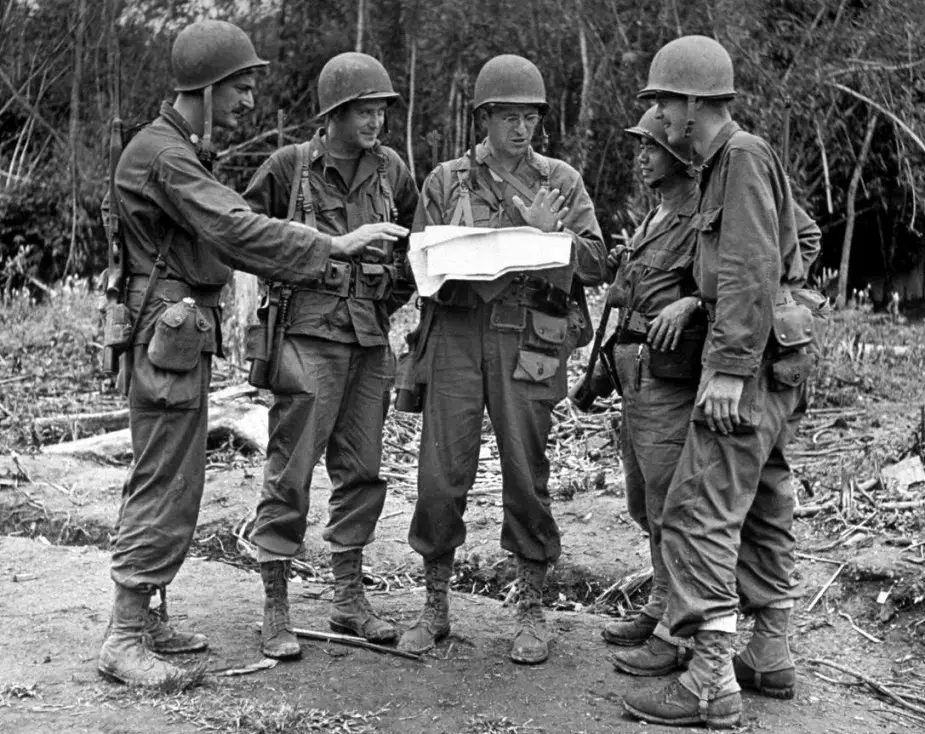Breaking news
U.S. Marine Corps to adopt new tropical combat uniform.
The U.S. Marine Corps is about to select a manufacturer for its new tropical combat uniform for hot and humid climates.

U.S. Marines practice casualty evacuations on May 19, 2016, at the Jungle Warfare Training Center, Camp Gonsalvas, Okinawa, Japan. (Photo by Jessica N. Etheridge/U.S. Marine Corps)
The USMC Tropical Combat Uniform is a rapid-dry, breathable uniform to be worn for prolonged periods in wet, jungle environments as an alternative to the current Marine Corps Combat Utility Uniform and the Marine Corps Combat Boot. This April month, Marine Corps Systems Command (MCSC), published a request for proposals to industry to manufacture the uniforms, with plans to issue by the final quarter of this fiscal year, which ends Sept. 30.
The decision to issue a better adapted tropical uniform is a consequence of the Pentagon’s increased emphasis on the Pacific region in an effort to prepare for a potential war with China, the “frictions” caused by the disputed sovereignty in the South China Sea getting more and more numerous. The Army finalized the design for its Improved Hot Weather Combat Uniform last year.
The use of "jungle" or "hot weather" boots predates World War 2 when small units of U.S. soldiers in Panama were issued rubber-soled, canvas-upper boots for testing.[ Developed in conjunction with the U.S. Rubber Company, a pair of jungle boots weighed approximately three pounds. Adopted in 1942, the design of the jungle boot was based on the idea that no boot could possibly keep out water and still provide sufficient ventilation to the feet in a jungle or swamp environment. Instead, the jungle boot was designed to permit water and perspiration to drain, drying the feet while preventing the entry of insects, mud, or sand.
In 1942, fused layers of original-specification Saran or PVDC were used to make woven mesh ventilating insoles for newly developed jungle boots made of rubber and canvas. The Saran ventilating insoles trapped air which was circulated throughout the interior of the boot during the act of walking; moist interior air was exchanged for outside air via the boot's water drain eyelets. In cold weather, the trapped air in Saran insoles kept feet from freezing by insulating them from the frozen ground; when walking, the insoles circulated moist air that would otherwise condense and freeze, causing trench foot or frostbite.
The 1942 jungle boots model issued to OSS Detachment 101 and other U.S. units fighting the Japanese in Burma (Picture source: Alain Henry de Frahan. Author’s collection)
The new M-1942 canvas-and-rubber jungle boots with Saran mesh insoles were tested by experimental Army units in jungle exercises in Panama, Venezuela, and other countries, where they were found to increase the flow of dry outside air to the insole and base of the foot, reducing blisters and tropical ulcers. The Saran ventilating mesh insole was also used in the M-1945 tropical combat boot.
Field reports from the Panama Experimental Platoon on the new lightweight boots were positive, and M-1942 jungle boots were later issued to a number of U.S. Army and Marine forces for use in tropical or jungle environments, including U.S. Army forces in New Guinea and the Philippines, and in Burma with OSS Detachment 101 (precursor of CIA), the 1st Air Commando Group, Merrill's Marauders and the Mars Task Force (5332nd Brigade, Provisional). As jungle boots wore out more quickly than the standard Army Type II field shoes, they were often carried by infantrymen attached to the field pack as a secondary pair of footwear, to be used when encountering heavy, soft mud.

Brig.Gen. Frank Merrill (center), commanding general of “Merrill’s Marauders” in Burma, and the two officers on the left are wearing 1942 jungle boots (U.S. National archives)
In 1944, the Panama sole was first developed by U.S. Army Sergeant Raymond Dobie, which used a series of angled rubber lugs in the soles to push soft mud from the soles, clearing them and providing much better grip in greasy clay or mud. However, the Panama sole was developed too late to see service in World War 2, and both M-1942 (Jungle) and M-1945 (Combat Boot, Tropical) boots used Vibram soles. With the end of the war, all official interest in jungle equipment came to a halt; an improved jungle boot with the new Panama sole was not produced until 1965.
British Imperial forces designed their own jungle boot based on the American one, but much higher. Special Operations Executive Force 136 personnel were issued with these boots during operations in Burma 1944–45. Otherwise, they were not issued until after the war where they were used in the Malayan Emergency. which a guerrilla war fought in the Federation of Malaya from 1948 until 1960. The conflict was between Commonwealth armed forces and pro-independence fighters of the Malayan National Liberation Army (MNLA), the military wing of the Malayan Communist Party (MCP). The war was fought over attempts by communist forces to gain independence for Malaya from the British Empire and to establish a socialist economy. The fighting spanned both the colonial period and the creation of an independent Malaya (1957). Although it was referred to as "The Emergency" by colonial authorities, the MNLA referred to it as the "Anti-British National Liberation War". The conflict was called an "Emergency" by the British for insurance purposes, as London-based insurers would not have paid out in instances of civil wars.
The development of jungle boots continued with many different types being tested and sometimes issued to troops since then.
The development of jungle uniforms was slower, the British army being the first to issue a “Jungle Green” uniform in late 1944 for the Burma and Pacific campaigns, using the remarkable Aertex material, both rapid-dry, breathable and lighter than cotton already issued in beige/sand color before the green color was adopted. The U.S. armed forces strangely had to wait until the Vietnam war to be progressively issued combat uniforms adapted to hot and humid climates. During World War 2, the U.S. units simply wore the HBT (Herringbone Twill Suit), either in one piece of shirt and trouser, this uniform being made in the same cotton material (green or camouflaged), no matter where it was used in the world.



























